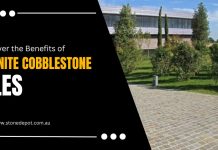Concrete slabs Melbourne is an economical, multipurpose construction material used in many different projects. It’s strong and long-lasting with only minimal upkeep requirements required – plus there are even fireproof properties added as an added benefit!
Water-repellant polyurethane foam insulation can withstand harsh chemicals found in water environments such as sewage treatment plants or sea walls, while its resistance to salt corrosion makes it suitable for roads and highways.
It is strong
Concrete is an amazingly strong material that can withstand huge loads, making it suitable for many different purposes. Common applications of this versatile substance include home building, building structures on pavements and roads and as an insulating concrete to reduce energy costs; or it can even be mixed with air entraining agents to reduce damage during freeze-thaw cycles.
Concrete aggregate is a very strong material, yet has poor tensile strength; steel fibers may be added to increase resilience and tensile strength by weaving them into the mix during mixing.
Other types of concrete additives exist to alter the properties of mixes, including accelerators to speed up set times, retarders to slow it down and superplasticizers that reduce water content in mixtures. Because these can have adverse impacts on strength, it is recommended to test small batches prior to using them on larger scale.
It is durable
Concrete’s durability and resistance to damage makes it the ideal material for coastal construction, such as piers, docks, seawalls and breakwaters. Concrete can withstand corrosion from seawater and prevent accumulation of harmful salts in structures like these while simultaneously offering strength development capabilities and freeze-thaw resistance.
Concrete buildings offer more resistance to water and corrosion damage, but also save builders money in maintenance costs over the life of a structure’s lifecycle. Durability lowers insurance costs over its life, making concrete more cost-effective than more fragile or combustible materials.
Building contractors must recognize that proper curing of concrete is key to its durability. Builders should ensure conditions are conducive for curing by maintaining optimal temperature and humidity conditions as well as using mixes with the lowest water cement ratio and minimal use of pozzolanic materials.
It is fire resistant
Concrete is one of the most fire resistant building materials available, as it does not combust easily and can help contain fire in an organized fashion. Furthermore, it’s non-toxic and has low thermal conductivity – all qualities which contribute to making concrete fire-resistant. Fireproofing and firestopping techniques may be utilized to further increase this resistance; both must be applied carefully in order to avoid failing at high temperatures.
Calcium silicate hydrate, the main binder found in concrete, allows it to withstand heat without melting or losing its structural properties – this allows concrete to act as a shield and protect occupants, firefighters and neighbouring structures against fires. Furthermore, concrete’s slow heat transfer properties help insulate buildings against energy losses as well as minimize any risks related to fire related losses.
It is easy to work with
Concrete is one of the easiest materials to work with when it comes to construction projects, from pouring it by hand or pumping, spraying or grouting it to shaping unique structures with its durability and weather resistance making it perfect for dam building as well as underground and sewage applications. Concrete requires minimal maintenance requirements compared with other building materials like metal, glass and even wood which requires special coatings or treatments for protection and is easy to form into unique shapes that stand out. It can even be molded to form unique forms. Concrete also needs very minimal upkeep compared to its counterparts such as weather resistance making concrete an excellent material choice that requires little care once set into position allowing it to form unique structures while also needing little upkeep; its low maintenance requirements make it suitable for projects like dam construction as well as underground and sewerage projects.
Concrete can be made using various aggregate materials, including recycled waste. Reusing materials helps reduce landfill waste while saving energy consumption; additionally, these recycled materials can be combined with certain admixtures to improve specific properties such as setting time reduction or energy savings.
Concrete is an effective insulator, helping buildings retain heat for reduced energy bills. Furthermore, its fireproof structure and low permeability mean it helps combat air pollution in polluted environments by reducing levels of nitric oxide emissions.
It is easy to maintain
Concrete requires little in the way of upkeep compared to other building materials that need constant repainting and coating, like wood. Concrete does not absorb moisture and resist mold and mildew growth, helping it remain clean and safe for families. Plus, its fireproof qualities reduce maintenance costs once structures have been completed.
Concrete’s high temperature resistance makes it an excellent material choice in buildings where heating and cooling systems are extensively employed, helping keep interior temperatures reasonable and reduce energy use and thus cutting costs on electricity bills.
Cement, the primary binder in concrete, can be made from recycled waste materials like broken glass and metal shavings that were once considered landfill trash. This reduces aggregate needs while keeping unused waste out of landfills and also provides soundproofing qualities ideal for use in hospitals or private practices where noise may impede patient recovery.














